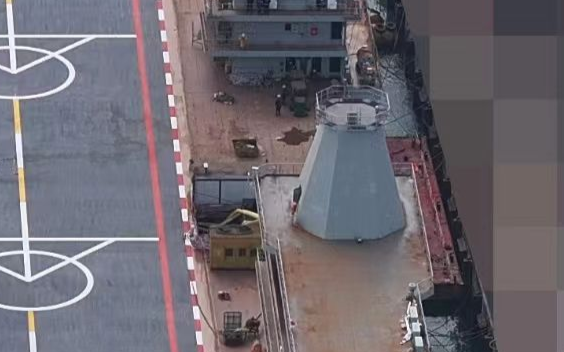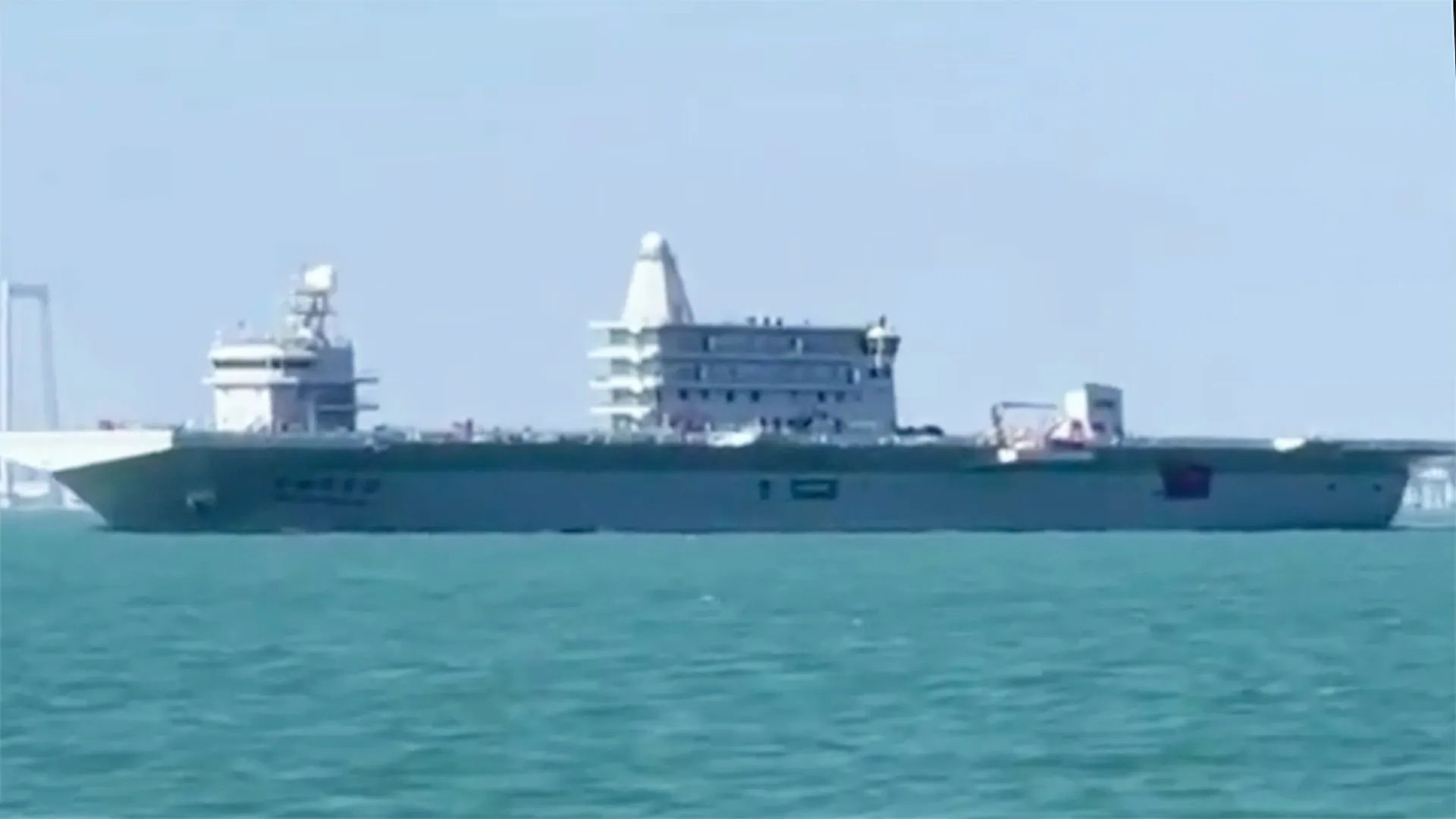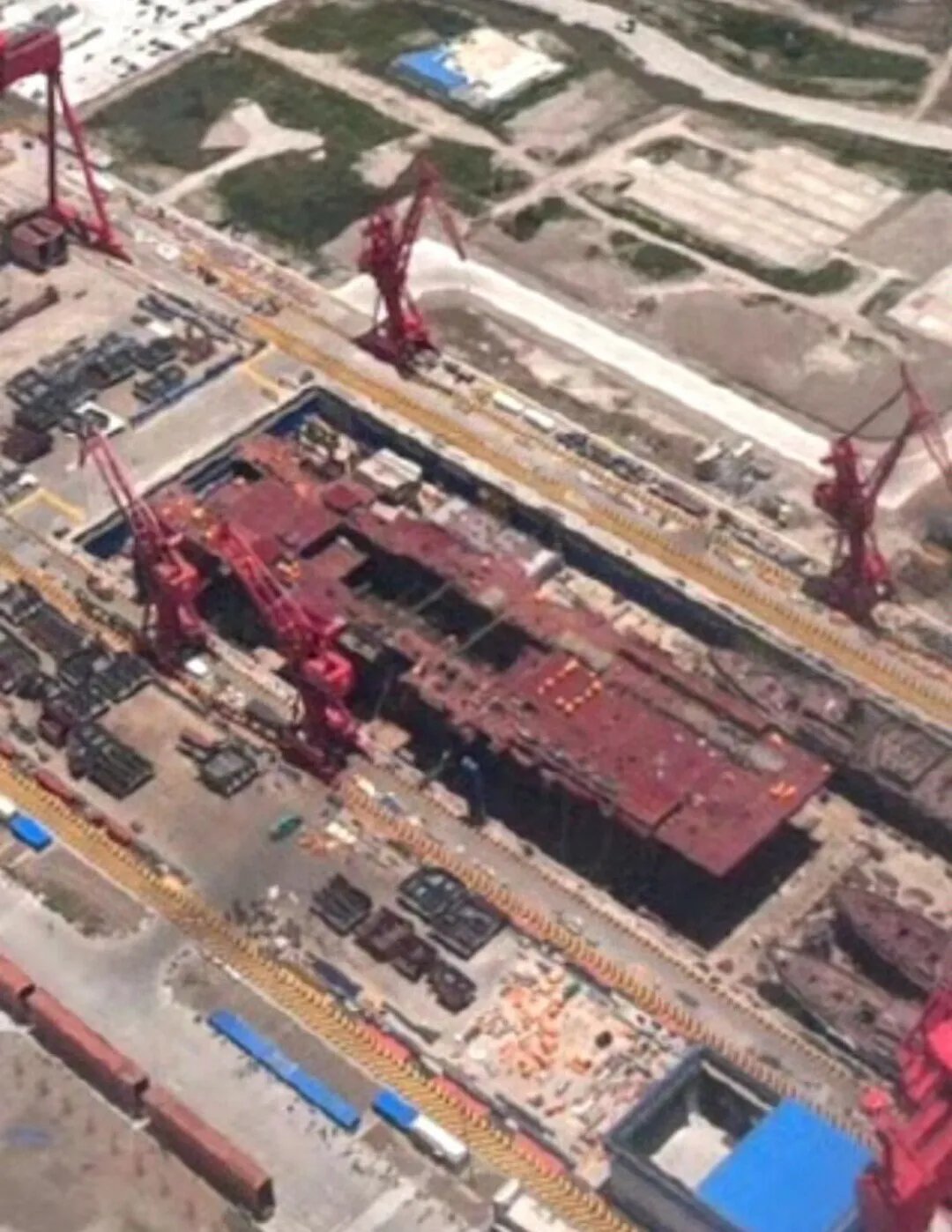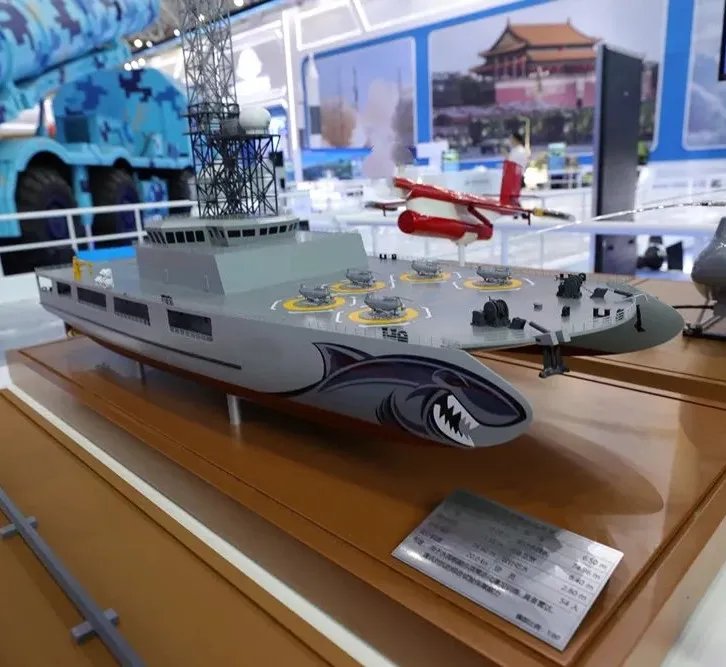Additional photos provide a more detailed look at the mysterious Chinese flattop that TWZ was first to report on, and which recently went to sea, apparently for its first trials. While the exact function of this vessel remains murky, the recently published photos do confirm that it’s intended to operate rotary-wing aircraft (perhaps in addition to fixed-wing drones), but there are no obvious signs of catapults or arrester cables of the kind that would be used for operating heavier fixed-wing types. There is also no indication that the vessel has a floodable well deck like those found on many amphibious warfare ships.
You can find TWZ’s full previous analysis of the intriguing vessel here.


The new photos show the vessel in port, seen from above, providing a good look at the large open flight deck. On the forward half of the deck are two sets of markings associated with operating rotary-wing aircraft, either crewed or uncrewed.
We now also get a better look at the unusual arrangement of three island-like superstructures. As we discussed before, the superstructure nearest the bow includes a bridge and conventional-type mast, while the larger central one has a rear-facing glazed tower area for managing flight operations, plus a prominent mast, although the spherical radome seen on top in previously published images is missing here. The new images also show no windows on the starboard side of the central island. Finally, the structure closest to the stern houses the ship’s exhaust stacks.
In one of the photos, we might be able to see an elevator to move aircraft between the main deck and a hangar deck, located between the first and second superstructures. This area is somewhat obscured by construction-related equipment and the opening could be simply an access point.

If this is not an elevator, it’s not immediately clear how aircraft would be moved between the deck and the hangar. We already know there’s no elevator on the left side of the ship, and the aperture in the same position on the starboard side may well also be used for stowing a lifeboat inside. It’s also conceivable that no hangar deck is present at all.
While details of the port facility have been obscured, the location may well be Guangzhou Shipyard International’s (GSI) facilities on Longxue Island, just southeast of the city of Guangzhou, where the vessel was built. GSI is a subsidiary of the China State Shipbuilding Corporation (CSSC), whose logo is prominently displayed on the exhaust stack.
The speed with which the project has been undertaken is notable.

Construction work on the new vessel appears to have started sometime after May of this year, with the launch following sometime between mid-September and mid-October.
Although the photos give us a better idea of the overall configuration of the vessel, it’s still unclear whether this is a People’s Liberation Army Navy (PLAN) project or if it’s being pursued as a private venture by CSSC. With still no signs of obvious military-style markings or a hull number, the latter option currently looks more likely.

The photos of the vessel so far suggest that it’s intended to operate crewed helicopters and drones, while the overall appearance may well point to a simpler and cheaper design and one that can be produced rapidly, if required, by commercial shipbuilders.
The PLAN’s interest in expanding its use of various tiers of drones from all of its big deck warships, including its aircraft carriers and big deck amphibious assault ships, has been well documented.
A vessel of this kind could provide the PLAN with additional naval airpower capacity without the same level of capability as a true aircraft carrier or a multifunctional amphibious assault ship, like the impressive Type 076 class, which you can read more about here.

Particular missions in which such a vessel could be highly relevant to the PLAN’s broader doctrine could include scenarios in the South China Sea or around the Taiwan Strait. Furthermore, crewed helicopters and drones could be operated from it in support of anti-submarine warfare operations, as well as amphibious operations.
Previously, we also looked at the possibility that the new vessel was built to meet a known Chinese government requirement for a “large-scale special deck operation” ship for maritime survey and other test/research activities. As well as a flight deck, this called for a “dock compartment,” although that is missing from this vessel.
That’s not to say that the vessel might not be related to a similar requirement for an ostensibly civilian research ship, but one that could equally flex to military operations, or be used for ‘gray zone’ warfare that falls between the two.

This would also provide parallels with Chinese efforts in building various types of more specialized drone mothership vessels, claimed to be primarily for training and testing purposes, but which could also have operational roles.
Even without a well deck, a ship of this kind could still deliver forces ashore via helicopters, during a variety of different contingency scenarios. These could include amphibious assault but also support during humanitarian assistance and disaster relief operations.
For now, we can’t say for sure whether CSSC’s new design is intended for training, testing, or demonstration, or whether it will become an operational crewed helicopter/drone carrier for the PLAN.
But with the vessel having already gone to sea, as part of a very rapid development program, we are sure to learn more about it in due course.
Contact the author: thomas@thewarzone.com
